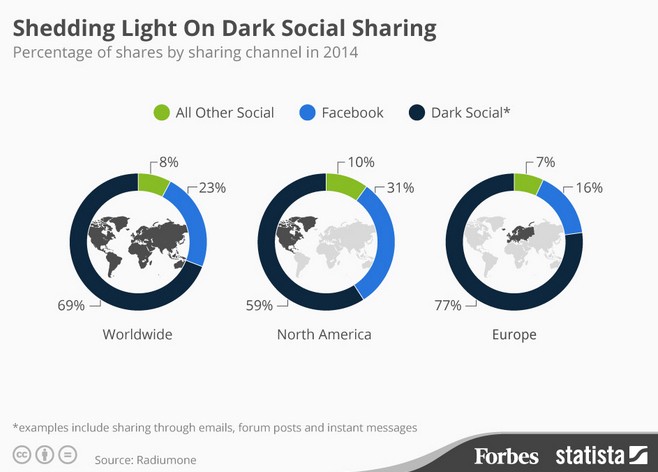Dark Social. No it’s not the name of a scary new Star Wars baddy for the digital age. It’s actually a term that's being bandied about by marketers more and more nowadays. But what does it actually mean? Is it as terrifying as it sounds?
Various recent articles have shed some - yes, you guessed it - light on the subject. It's an extremely relevant subject for B2B marketers (Forbes Magazine describes it as “the dominant force in online sharing") so I thought I'd examine some of the key aspects in today’s post.
In basic terms, 'dark social' (a term first used by The Atlantic's Alexis Madrigal) is hidden traffic to your website, where analytics can't determine the exact source from which it arrived.
Business2Community suggests considering the following scenario: you're on your lunch hour, scrolling down your news feed on Facebook when an article grabs your attention. After reading it (perhaps it's about a product or service) you share it with a co-worker who you think would be interested by copying and pasting the URL into an email and sending it to them privately. By doing so, you've just unwittingly participated in the 'dark social phenomenon', and these under-the-radar shared links can prove extremely hard to track, analytically-speaking.
RadiumOne has studied dark social inbound traffic in depth and discovered that it accounts for nearly three-quarters (74%) of online sharing activity in the UK! Apps such as WhatsApp and SnapChat are prime examples of platforms through which these links are shared. A staggering 50 billion messages are received through WhatsApp every day, with some sites now even featuring WhatsApp 'share' buttons on their pages. But if you sent someone a link this way, Google Analytics would determine this to be direct traffic to the site.

Do I hear you ask “so what”? Does it really matter how a link is shared? Well, actually, it really does. When a work colleague or friend, for example, sends you a link to a service or product, these can be considered very strong buying signals indeed. Essentially, they've hand-picked their subject matter and recipient. This type of one-to-one messaging could offer B2Bs numerous opportunities, especially in terms of audience buying intent and interest.
By tapping into dark social, businesses could potentially open up whole new areas of social listening. But how can this be captured and tracked? Well, that's something for the future. It's likely to involve mapping social shares in forensic detail and examining sources using highly sophisticated tracking tools, some of which probably haven't even been invented yet.
Of course you can’t take advantage of any opportunity until you know that it exists...so, hopefully, you're no longer quite so in the dark when it comes to this under-the-radar aspect of social media marketing.